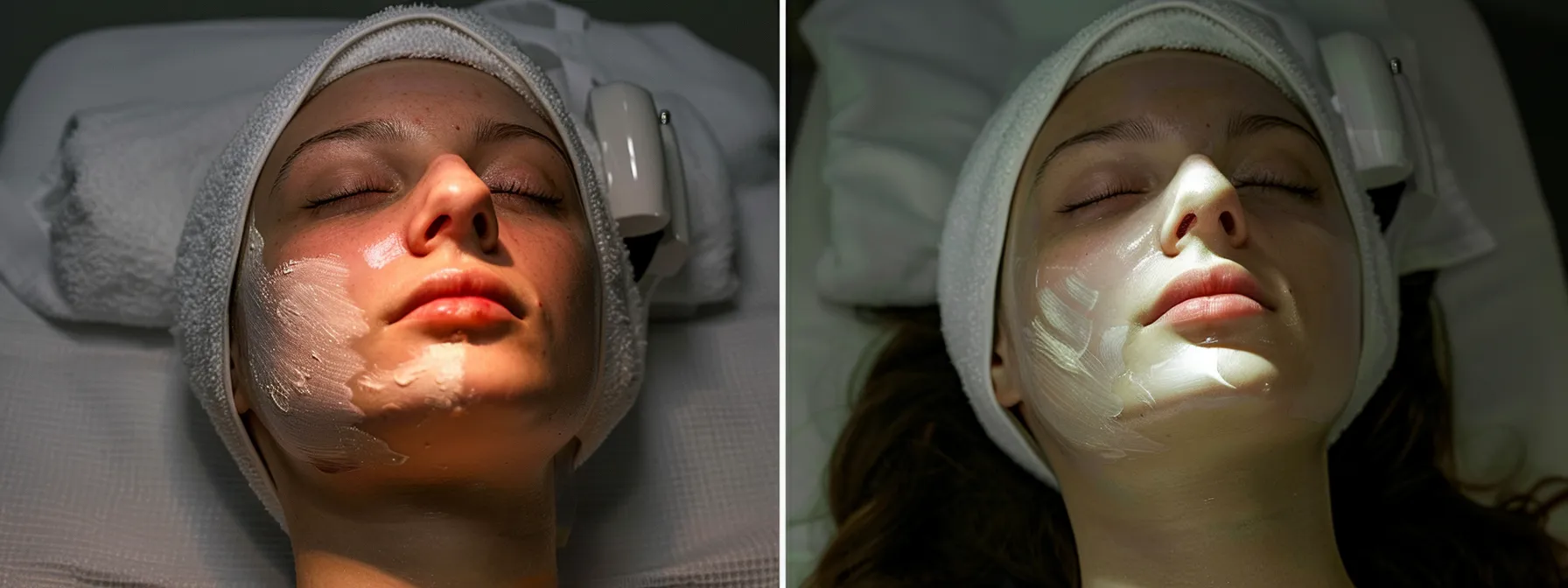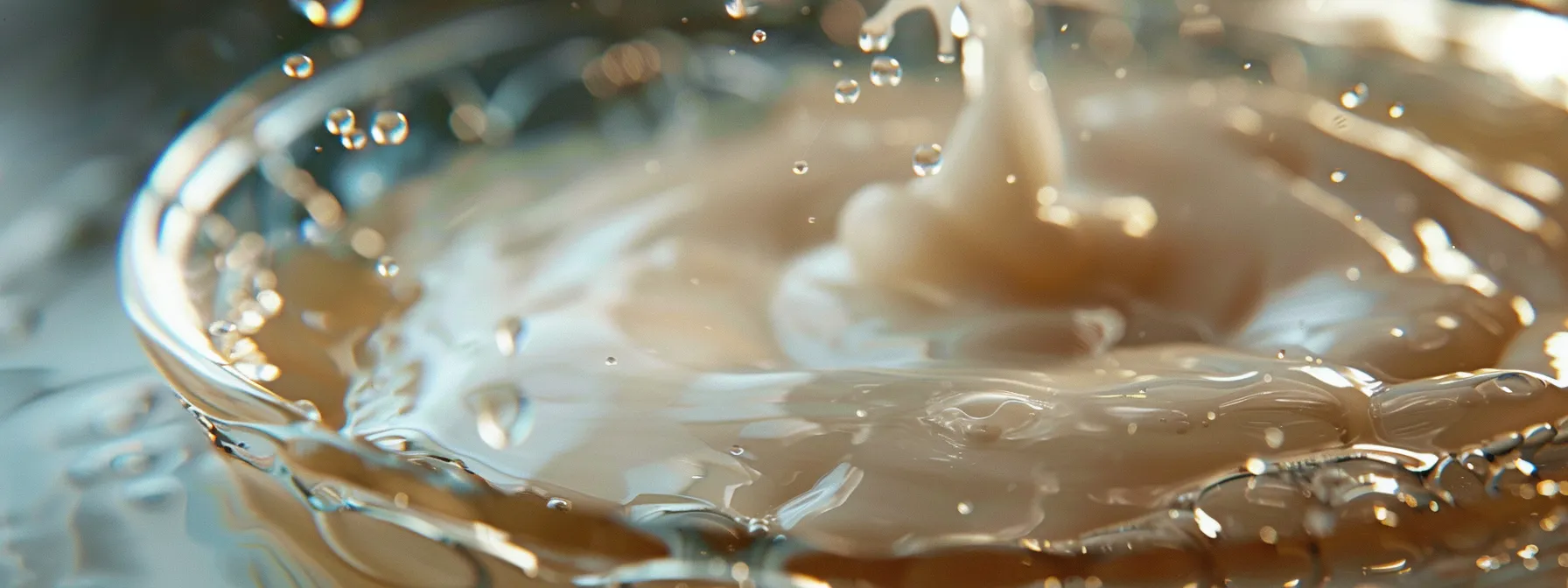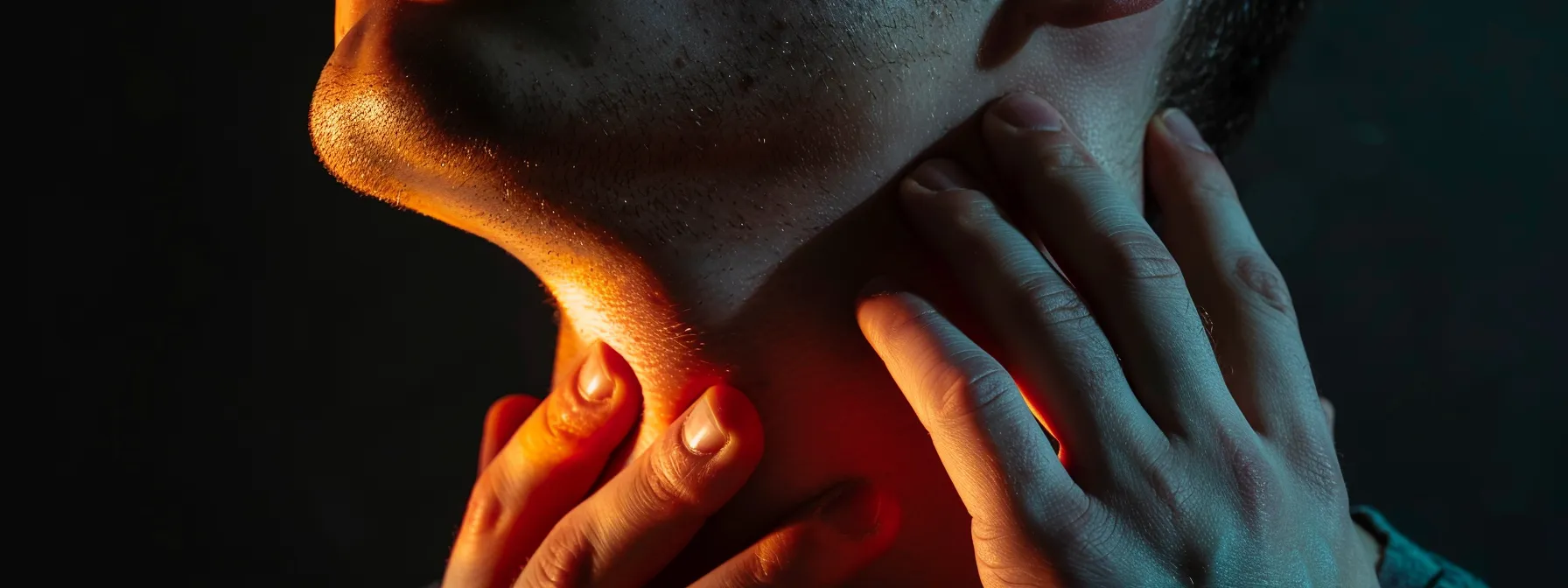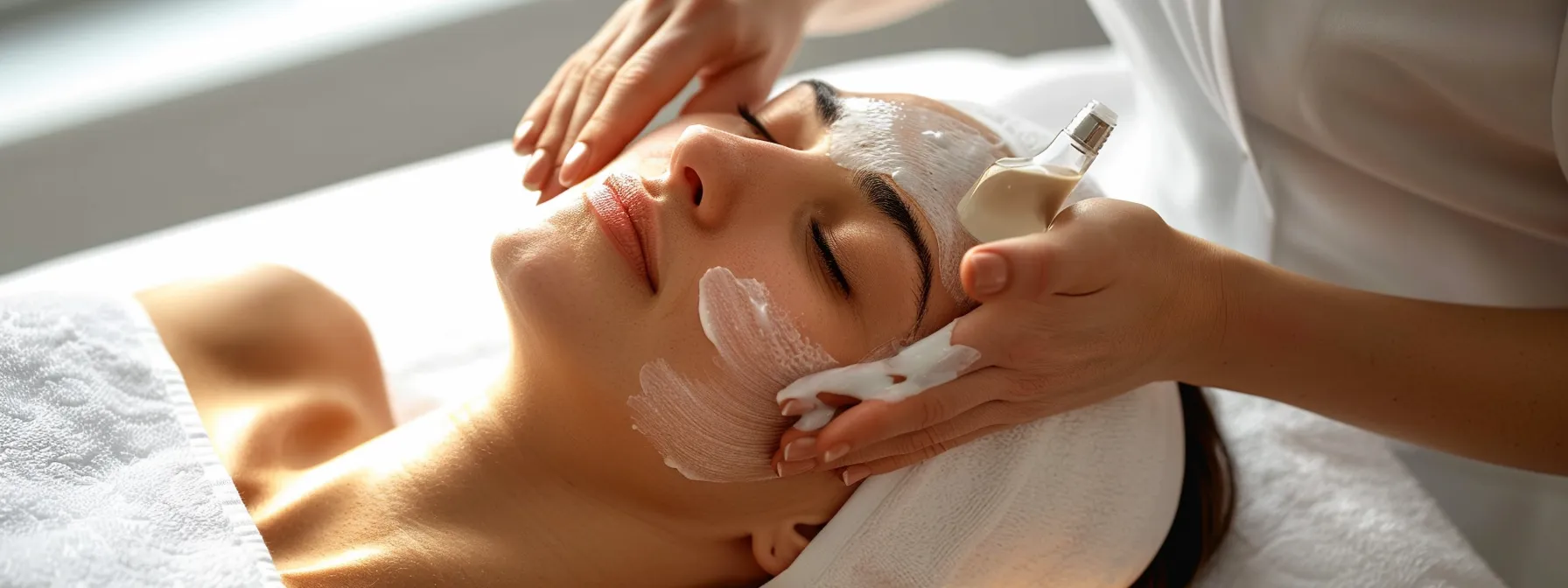Chemical peels can transform your skin, but the recovery process is crucial. Are you unsure about how to care for your skin after a peel? This guide will walk you through essential post-peel skincare practices, including proper moisture techniques and wrinkle-reducing tips. You’ll learn which medications to avoid, how to manage itching, and the best ways to protect your renewed skin. By following these expert tips, you’ll maximize your peel’s benefits and achieve healthier, more radiant skin.
Key Takeaways
- Chemical peels remove damaged skin layers, stimulating cell renewal and collagen production
- Proper post-peel care includes gentle cleansing, moisturizing, and sun protection
- Avoid harsh skincare products, sweating, and makeup for several days after a peel
- Monitor for signs of infection and consult a professional if complications arise
- Gradually reintroduce exfoliation and plan future treatments to maintain results
Understanding the Chemical Peel Process

Chemical peels are skin treatments that use acids to exfoliate and rejuvenate the skin. This process involves applying a solution that removes damaged outer layers, stimulating cell renewal. Different types of peels, including those with beta hydroxy acid, offer varying intensities and effects. The healing timeline depends on the peel strength, with proper hydration essential for recovery.
What Happens to Your Skin During the Procedure
During a chemical peel procedure, the skin undergoes a controlled exfoliation process. The American Academy of Dermatology notes that different acids, such as phenol or salicylic acid, are applied to the skin, causing it to blister and eventually peel off. This process removes damaged outer layers, revealing fresher, smoother skin underneath. While the procedure may cause temporary discomfort, it stimulates collagen production and cell renewal. It’s important to note that certain peels, like those containing vitamin C, may not be suitable during pregnancy.
Different Types of Chemical Peels and Their Effects
Chemical peels come in various types, each with unique effects on the skin. Superficial peels using alpha-hydroxy acids gently exfoliate the outer layer, while medium-depth peels containing trichloroacetic acid penetrate deeper to address more significant skin concerns. Deep peels, often using phenol, provide the most dramatic results but require longer recovery. Some chemical peels incorporate laser treatments for enhanced cell turnover and collagen production. It’s crucial to choose the right peel based on skin type and concerns, as certain formulations may increase sensitivity to skin cancer or require specific post-treatment care, such as specialized lotions.
Typical Healing Timeline After a Peel
The healing timeline after a chemical peel varies depending on the peel’s intensity. Superficial peels typically heal within a week, with mild redness and flaking. Medium-depth peels may take 7-14 days for recovery, often involving more noticeable peeling and potential hyperpigmentation. Deep peels require the longest healing time, up to several weeks, and may necessitate the use of specialized serums or tretinoin to aid in skin regeneration. Proper aftercare is crucial for optimal healing and preventing complications like infection or scarring.
Immediate Steps to Take Post-Peel
After a chemical peel, proper care is crucial for optimal skin rejuvenation. This section covers essential post-peel steps: keeping the treated area clean to prevent infection, managing discomfort and sensitivity from the glycolic acid treatment, and protecting the skin from ultraviolet rays. These practices help maintain skin health and enhance the peel’s effects on skin pigment.
Keeping the Treated Area Clean
After a chemical peel, keeping the treated area clean is crucial to prevent infection and promote proper healing. Patients should gently cleanse their skin with a mild, non-irritating cleanser and lukewarm water, avoiding harsh scrubbing or exfoliation. It’s important to be mindful of potential complications, such as cold sores or skin cancer, and report any unusual symptoms to the healthcare provider. To maintain cleanliness and minimize the risk of infection, patients should follow these steps:
- Wash hands thoroughly before touching the treated area
- Use a gentle, fragrance-free cleanser
- Pat the skin dry with a clean, soft towel
- Avoid touching or picking at peeling skin
- Skip exercise or activities that cause excessive sweating for the first 24-48 hours
Managing Discomfort and Sensitivity
Managing discomfort and sensitivity after a chemical peel is crucial for optimal recovery. Patients can apply a gentle, petroleum-based ointment to soothe the skin and minimize irritation. To reduce inflammation, some practitioners recommend light therapy sessions. It’s essential to avoid direct sunlight and apply a broad-spectrum sunscreen to protect the sensitive skin from UV damage. Patients should refrain from touching or pulling at peeling skin, as this can lead to scarring or infection.
Protecting Your Skin From Sun Exposure
Protecting the skin from sun exposure is crucial after a chemical peel. Patients should apply a broad-spectrum sunscreen with a high SPF daily, even on cloudy days, to shield their sensitive skin from harmful UV rays. While diet and therapy can support overall skin health, they don’t replace the need for proper sun protection. It’s important to avoid direct sunlight and wear protective clothing, as the skin may be more susceptible to damage and hyperpigmentation during the healing process.
Essential Skincare Practices During Recovery

Recovery after a chemical peel requires careful skincare practices. Patients should choose suitable moisturizers for sensitive skin, use gentle cleansing techniques, and maintain proper hydration. These steps, along with following a recommended schedule, help protect the treated area, including delicate areas like the lips. Proper care ensures optimal healing and minimizes potential side effects from treatments like hydroquinone.
Choosing the Right Moisturizers
After a chemical peel, choosing the right moisturizer is crucial for the face’s recovery. Patients should select products recommended by their clinic, focusing on gentle, fragrance-free formulas that won’t irritate sensitive skin. Moisturizers containing antioxidants can help soothe and protect the skin during healing. It’s important to avoid products with harsh ingredients or those that might interfere with any prescribed antibiotics or post-peel treatments. The right moisturizer will help maintain hydration and support the skin’s natural healing process without compromising the results of the chemical peel:
| Moisturizer Type | Benefits | Best For |
|---|---|---|
| Hyaluronic Acid-based | Hydration, Plumping | All skin types |
| Aloe Vera-based | Soothing, Cooling | Sensitive skin |
| Ceramide-rich | Barrier repair | Dry, damaged skin |
Gentle Cleansing Techniques
Gentle cleansing techniques are crucial after a chemical peel to avoid irritation and promote healing. Patients should use lukewarm water and a mild, pH-balanced cleanser, avoiding harsh scrubs or exfoliants that could damage the sensitive skin. It’s important to pat the face dry gently with a soft towel, rather than rubbing, to prevent further irritation. Those who typically use retinol or other active ingredients in their skincare routine should temporarily discontinue these products until the skin has fully healed from the acid treatment. Here are some key steps for gentle cleansing after a facial peel:
- Use a fragrance-free, non-comedogenic cleanser
- Wash with cool or lukewarm water
- Gently pat skin dry with a clean, soft towel
- Avoid using washcloths, loofahs, or other abrasive tools
- Skip makeup and other cosmetics for the first few days
Importance of Hydration for Healing
Proper hydration is crucial for skin healing after a chemical peel. Drinking plenty of water helps maintain skin elasticity and aids in the regeneration process, reducing the risk of scarring. Patients should apply a gentle, fragrance-free cream to keep the skin moisturized and prevent excessive dryness or peeling. This is especially important for those prone to sunburn or with pre-existing skin diseases. Adequate hydration supports the skin’s natural healing process, minimizing discomfort and promoting a smoother recovery:
| Hydration Method | Benefits | Frequency |
|---|---|---|
| Water intake | Internal hydration, toxin removal | 8-10 glasses daily |
| Moisturizing cream | Skin barrier protection, reduced dryness | 2-3 times daily |
| Hydrating face mask | Intense moisture boost, soothing | 1-2 times weekly |
Activities and Products to Avoid

After a chemical peel, patients must avoid certain activities and products to ensure optimal healing. This section covers skincare ingredients that may irritate freshly exfoliated skin, the importance of avoiding physical exertion that causes sweating, and why steering clear of makeup and other cosmetics is crucial. Understanding these precautions helps maintain collagen production and prevents dehydration, ensuring the best results from dermatology treatments.
Skincare Ingredients That May Irritate
After a chemical peel, patients should avoid skincare products containing harsh ingredients that may irritate freshly exfoliated skin. Common irritants include lactic acid, which can be too strong for sensitive post-peel skin. Instead, gentle products like petroleum jelly or Cetaphil can help soothe and protect the skin. While hyaluronic acid is generally safe, patients should consult their dermatologist before using any products. It’s crucial to avoid free radical-generating ingredients that could hinder the skin’s healing process:
| Ingredient | Why to Avoid | Safe Alternative |
|---|---|---|
| Lactic Acid | Too harsh for sensitive skin | Hyaluronic Acid |
| Retinoids | Can cause irritation | Gentle moisturizer |
| Fragrances | Potential allergic reactions | Fragrance-free products |
Avoiding Physical Exertion That Causes Sweating
After a chemical peel, patients should avoid physical activities that cause sweating for at least 48 hours. Sweat can irritate the treated skin, potentially leading to acne breakouts or interfering with the healing process. Strenuous exercise, hot yoga, or intense workouts should be postponed until the skin has fully recovered. Patients who have undergone treatments for acne or used retinoids should be especially cautious, as their skin may be more sensitive. It’s advisable to avoid alcohol consumption during this period, as it can dehydrate the skin and slow down the healing process.
Steering Clear of Makeup and Other Cosmetics
After a chemical peel, patients should avoid applying makeup and other cosmetics to their skin for at least 5-7 days. This allows the skin to heal properly and prevents potential irritation or infection. During this time, patients should focus on using a gentle cleanser and moisturizer to support their skin’s recovery. For those treating melasma or other complexion issues, it’s crucial to avoid products containing vitamin C or other active ingredients that could interfere with the peel’s effects. Patients who have undergone plastic surgery or other intensive treatments should consult their doctor before resuming their regular skincare routine.
Monitoring Your Skin for Complications

After a chemical peel, monitoring the skin for complications is crucial. This section covers recognizing signs of infection, when to consult a skincare professional, and preventing scarring and pigmentation issues. Patients should watch for unusual redness, swelling, or discharge, especially around the neck area. Avoiding saunas and managing inflammation are key to proper wound healing and optimal results.
Recognizing Signs of Infection
After a chemical peel, patients should watch for signs of infection to ensure proper healing. These signs may include increased redness, swelling, warmth, or unusual discharge from the treated area. Patients might also experience fever or chills, which could indicate a systemic infection. If any of these symptoms occur, especially if they worsen over time, it’s crucial to contact the skincare professional immediately. Here are the key signs of infection to monitor:
- Persistent or increasing redness beyond normal healing
- Unusual swelling or puffiness
- Warm or hot sensation in the treated area
- Pus or yellowish discharge
- Fever or chills
- Increased pain or discomfort
When to Consult Your Skincare Professional
Patients should consult their skincare professional if they experience persistent redness, swelling, or pain beyond the expected recovery period. It’s also important to seek advice if the skin shows signs of infection, such as unusual discharge or fever. Those with a history of keloid scarring or who have concerns about their healing process should contact their provider promptly. Here are key situations when to consult a skincare professional:
- Severe or prolonged pain
- Unexpected skin changes or reactions
- Signs of infection (fever, pus, increased redness)
- Delayed healing or excessive peeling
- Concerns about scarring or pigmentation changes
Preventing Scarring and Pigmentation Issues
To prevent scarring and pigmentation issues after a chemical peel, patients should diligently follow their skincare professional’s aftercare instructions. This includes avoiding direct sun exposure and applying a broad-spectrum sunscreen daily to protect the sensitive skin from UV damage. Patients should refrain from picking or scratching at peeling skin, as this can lead to scarring or uneven pigmentation. If hyperpigmentation occurs, patients may need to use specialized products or undergo additional treatments to address the issue.
Long-Term Care for Your Renewed Skin

Long-term care after a chemical peel is crucial for maintaining results. This section covers gradually reintroducing exfoliation to the skincare routine, using appropriate products to maintain the peel’s benefits, and planning future treatments for ongoing skin improvement. These steps help patients maximize the effects of their chemical peel and keep their skin looking renewed.
Gradually Reintroducing Exfoliation
After a chemical peel, patients should gradually reintroduce exfoliation to their skincare routine. They should wait at least two weeks before using any gentle exfoliants, starting with a mild scrub or chemical exfoliant once a week. As the skin continues to heal, patients can slowly increase the frequency of exfoliation, always monitoring their skin’s response. Here’s a guide for reintroducing exfoliation:
| Week | Exfoliation Method | Frequency |
|---|---|---|
| 2-3 | Gentle physical scrub | Once a week |
| 4-5 | Mild chemical exfoliant | Once a week |
| 6+ | Regular exfoliation routine | 2-3 times a week |
Maintaining Results With Appropriate Products
To maintain the results of a chemical peel, patients should use products that support skin health and protect against environmental damage. A gentle cleanser, hydrating moisturizer, and broad-spectrum sunscreen form the foundation of a post-peel skincare routine. Patients can gradually introduce products with active ingredients like vitamin C or niacinamide to enhance skin brightness and texture. It’s important to choose products suitable for sensitive skin and avoid harsh ingredients that could irritate the renewed skin:
| Product Type | Key Ingredients | Benefits |
|---|---|---|
| Gentle Cleanser | Ceramides, Glycerin | Cleansing without stripping |
| Hydrating Moisturizer | Hyaluronic Acid, Squalane | Deep hydration, Barrier repair |
| Sunscreen | Zinc Oxide, Titanium Dioxide | UV protection, Anti-aging |
Planning Future Treatments for Ongoing Benefits
Planning future treatments is essential for maintaining the benefits of a chemical peel. Patients should consult with their skincare professional to create a personalized treatment plan that addresses their specific skin concerns and goals. Typically, a series of chemical peels spaced 4-6 weeks apart can provide optimal results for issues like acne, fine lines, or uneven skin tone. It’s important to allow adequate time between treatments for the skin to fully heal and regenerate. Here’s a general guideline for planning future chemical peel treatments:
- Mild peels: Every 2-4 weeks
- Medium peels: Every 3-6 months
- Deep peels: Once a year or as recommended by a dermatologist
- Alternating peels with other treatments like microdermabrasion or facials
- Adjusting treatment frequency based on skin’s response and seasonal changes
Conclusion
Chemical peel recovery requires diligent care and attention to achieve optimal results. Following proper post-peel practices, such as keeping the treated area clean, managing discomfort, and protecting the skin from sun exposure, is crucial for successful healing. Long-term skincare, including gradual reintroduction of exfoliation and using appropriate products, helps maintain the benefits of the treatment. By adhering to these guidelines and planning future treatments wisely, patients can enjoy renewed, healthier-looking skin and maximize the effectiveness of their chemical peel experience.

